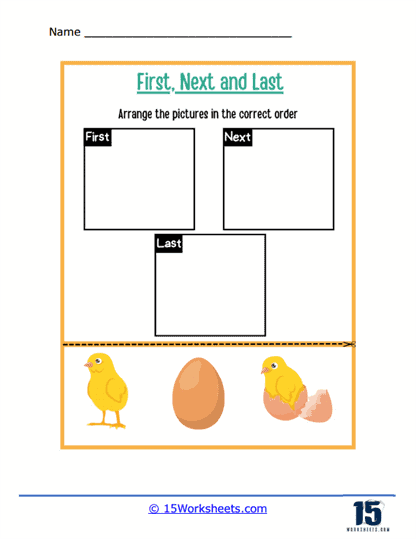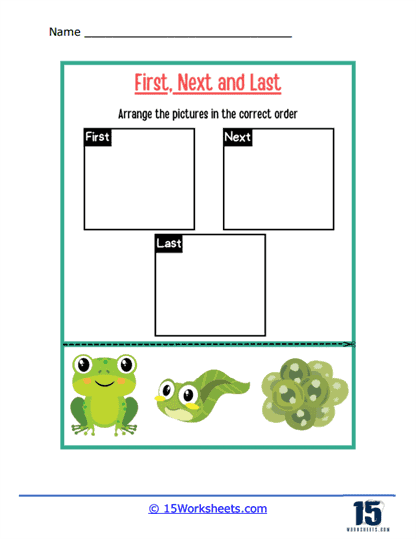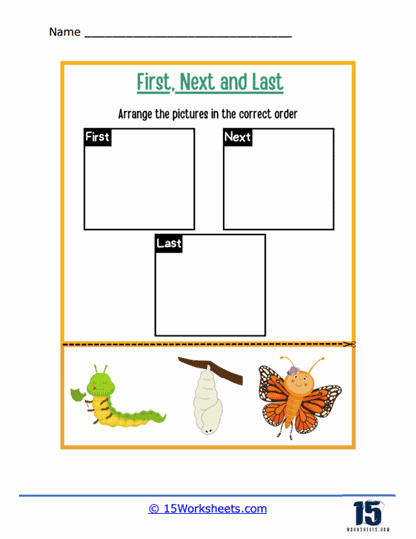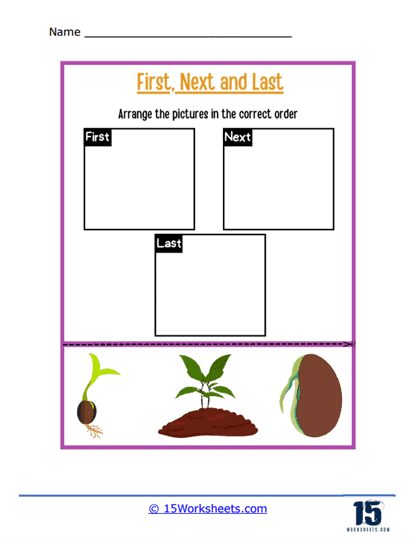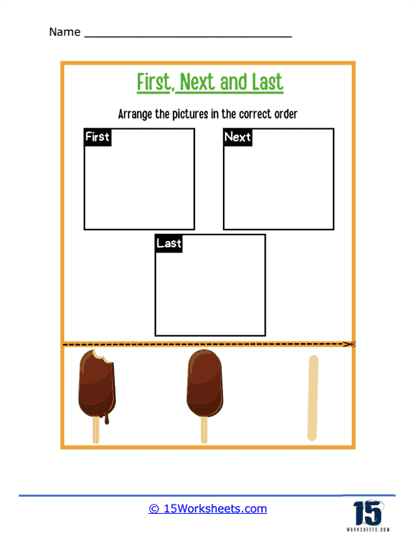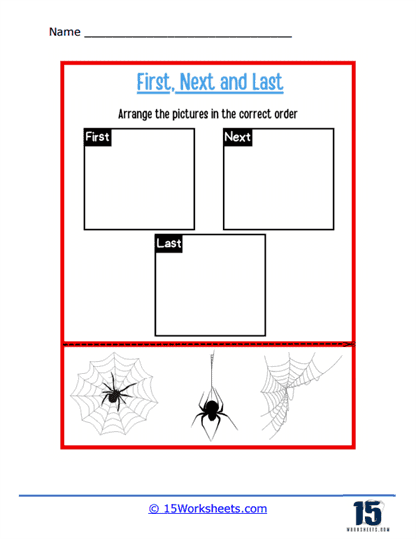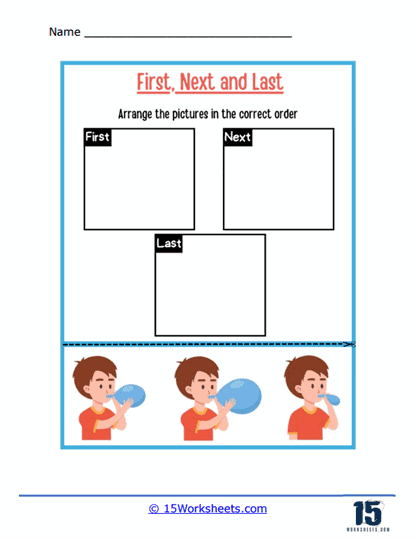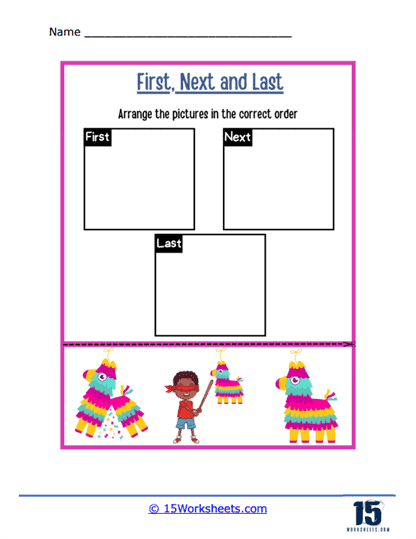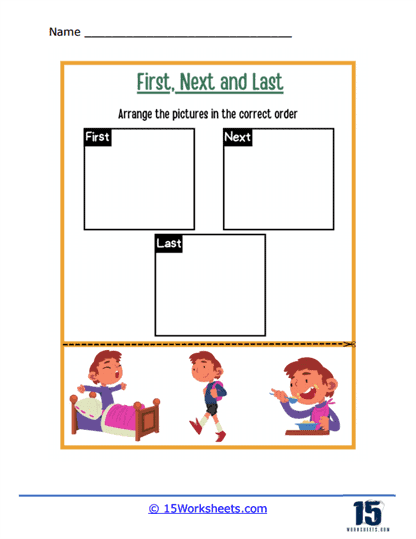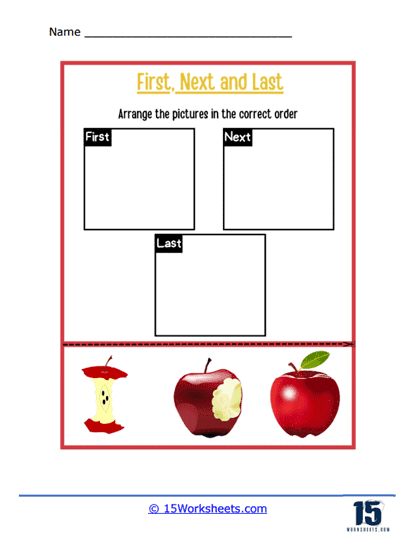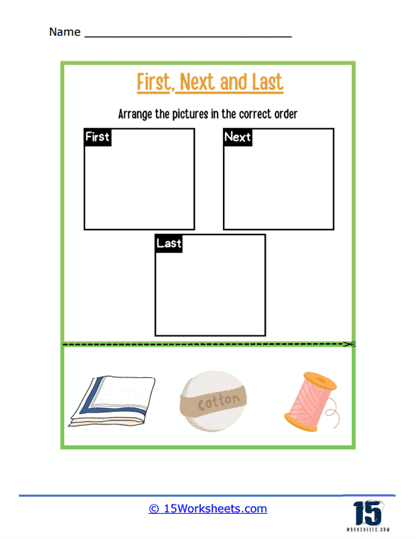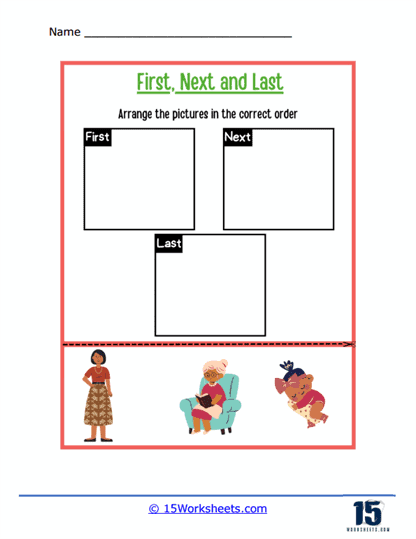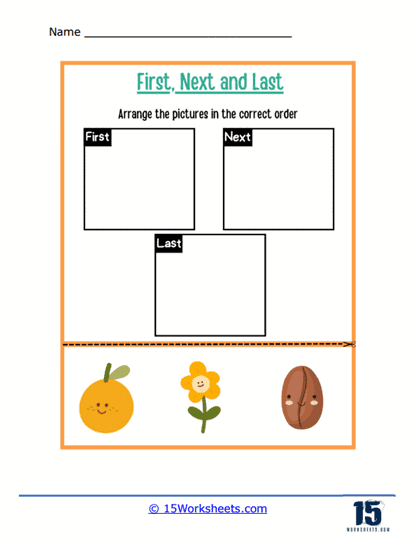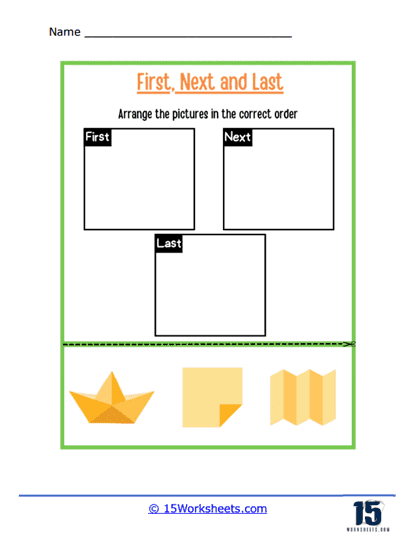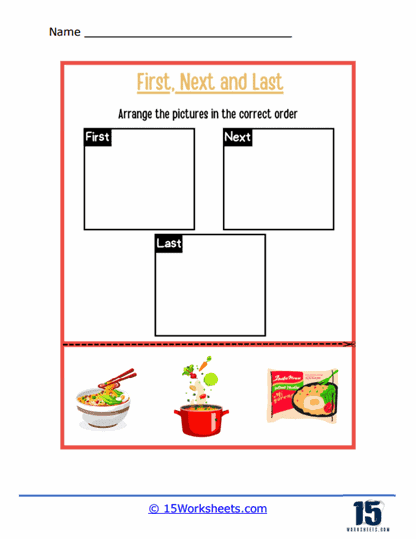First, Next, Last Worksheets
What Are First, Next, Last Worksheets?
First, Next, Last worksheets were designed to help children develop their sequencing and storytelling skills, as well as their understanding of temporal concepts. These worksheets feature a series of pictures or events that need to be arranged in the correct order. The child’s task is to identify which event occurs first, which event comes next, and which event happens last in the sequence.
First, Next, Last worksheets offer several benefits for children:
Sequencing Skills – By arranging the events or pictures in order, children practice understanding the logical progression of events and develop their sequencing skills.
Temporal Concepts – These worksheets help children grasp the concepts of time and order, such as the difference between past, present, and future, or the idea of cause and effect.
Reading Comprehension – Sequencing events is an essential skill for reading comprehension, as it allows children to follow the flow of a story and understand the relationships between events.
Storytelling and Writing – Developing a sense of order and progression in storytelling is crucial for children to create and share their stories, as well as improve their writing skills.
Critical Thinking and Problem-solving – Children must analyze the information presented in the worksheet and use their critical thinking and problem-solving skills to determine the correct sequence of events.
These worksheets can be adapted for various age groups and difficulty levels, featuring simple sequences for younger children or more complex scenarios for older children. They can be used in conjunction with reading activities, creative writing exercises, or as a standalone activity to practice sequencing and storytelling skills.
How To Teach Kids these Concepts
Teaching kids the concept of First, Next, and Last is essential for developing their sequencing, storytelling, and comprehension skills. Here are some strategies and activities to help teach children these concepts:
Start with Simple Sequences – Begin by teaching children to recognize and order simple, everyday sequences, such as getting dressed, brushing teeth, or making a sandwich. Use clear, step-by-step instructions and demonstrations to help them understand the process.
Use Visuals – Visual aids such as pictures, illustrations, or manipulatives can help children grasp the concepts of First, Next, and Last more easily. You can create or find picture cards that depict different events or actions and ask children to arrange them in the correct order.
Storytelling – Read stories to children and ask them to identify the First, Next, and Last events in the narrative. Encourage them to retell the story in their own words, focusing on the sequence of events.
Create First, Next, Last Worksheets – Design or find worksheets that require children to arrange pictures or events in the correct order. Start with simple scenarios and gradually increase complexity as they become more proficient.
Use Games and Activities – Incorporate fun activities and games to reinforce the concept of First, Next, and Last, such as:
Simon Says – Give children instructions in a specific order (e.g., “First, touch your nose. Next, clap your hands. Last, jump up and down.”)
Scavenger Hunt – Create a scavenger hunt with clues that require children to follow a sequence of actions or find items in a specific order.
Model and Practice – Demonstrate the concepts of First, Next, and Last in everyday activities and routines. Encourage children to use these terms when describing their actions or planning their activities.
Use Repetition and Reinforcement – Reinforce the concepts of First, Next, and Last through consistent practice and repetition. Offer praise and feedback as children become more comfortable with sequencing and using these terms.
Connect to Personal Experiences – Encourage children to relate the concept of First, Next, and Last to their personal experiences, such as describing their morning routine, recounting a recent trip, or explaining how to play a game.
By using these strategies and activities, you can help children develop a strong understanding of the concepts of First, Next, and Last, which will benefit their sequencing, storytelling, and comprehension skills.

